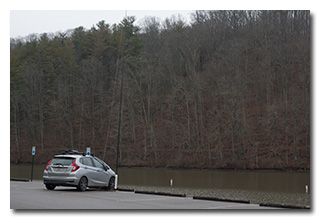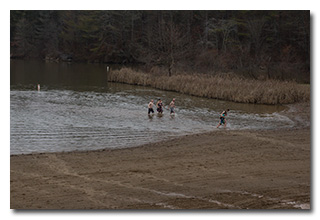
by William Eric McFadden
From the Strouds Run State Park website:
-
Several mounds and ancient fortifications were found in this area by early settlers telling us that the Adena Indians once lived here. In more recent history, this was home to the powerful Shawnee Nation until the Treaty of Greenville forced them to abandon their lands in southern Ohio.
The first settlers arrived in the Athens County region in 1796. Two townships of land in the area had been apportioned by the Ohio Company in 1795 for the benefit of a university. Settlers were encouraged to settle on these college lands so as to make them attractive, productive and to form a fund for the institution.
This venture led to the founding of the town of Athens and Ohio University, the first college in the Northwest Territory. Settlers came by way of flatboats from Marietta down the Ohio and up the Hocking River to an attractive bluff where the town of Athens is now located.
With the discovery of rich coal fields in the area, Athens County soon developed into one of the leading coal producers in the state. The Hocking Canal and railroads provided easy means for shipping coal to distant markets. Clay tile, brick and salt were other industries that brought prosperity to the area.
The park derives its name from the Strouds family who settled in the area in the early 1800s. The land was purchased by the state for forest conservation purposes from 1948 to 1953. The dam creating Dow Lake was completed in 1960. The lake bears the name of C.L. Dow of Ohio University who was instrumental in initiating the project.
Pictures
Description
On Monday, January 1, 2024, one member of the Southeast Ohio Radio Adventure Team performed a successful New Year's Day activation of Strouds Run State Park (K-1994) as part of the Parks on the Air (POTA; link) program.
 Eric arrived at the swim beach area at about 1925 UTC. Parking his car away from others, Eric quickly deployed his
28½' wire vertical on his 31' Jackite fiberglass telescoping mast on his drive-on base and, because the
temperature was cold (37°F) and rain threatened, he deployed his Elecraft KX3 inside his car.
Eric was on the air at 1932 UTC.
Eric arrived at the swim beach area at about 1925 UTC. Parking his car away from others, Eric quickly deployed his
28½' wire vertical on his 31' Jackite fiberglass telescoping mast on his drive-on base and, because the
temperature was cold (37°F) and rain threatened, he deployed his Elecraft KX3 inside his car.
Eric was on the air at 1932 UTC.
As expected, Eric found he had good cell-signal at this location and he would be able to spot himself on the POTA Spots website and to use POTA Spots to identify possible Park-to-Park (P2P) QSOs.
Eric began his operation on 20m. Finding himself a clear frequency to run, Eric began calling "CQ POTA" and was quickly auto-spotted on POTA Spots. Eric's first QSO came at 1937 UTC with K9IS in Idaho. QSOs came quickly, with Eric's sixteenth QSO coming at 1953 UTC with KJ4WNA in Texas. This run included a P2P QSO with K5BDH at Sheldon Lake State Park (K-3056) in Texas and QSOs with operators located in Wisconsin (2), Pennsylvania, Florida (2), Texas (3), Michigan, Illinois (2), Rhode Island, Oklahoma, Connecticut, New York, and North Carolina.
Switching to 40m, Eric found a clear frequency to run, began calling CQ, and was again auto-spotted on POTA Spots. His first QSO in this run came at 1958 UTC with KG8HZ in Michigan. QSOs came slowly, with Eric's fourth QSO in this run coming at 2005 UTC with W2SCT in New York. This run included QSOs with operators located in Michigan, Wisconsin, North Carolina, and New York.
Switching to 30m, Eric found a clear frequency, began calling "CQ POTA", and was auto-spotted to POTA Spots. Unfortunately, several minutes of calling failed to produce any QSOs.
Eric finished his operation by switching to 17m. Finding himself a clear frequency, he called "CQ POTA" and was auto-spotted to POTA Spots. Eric's first QSO in this run came at 2013 UTC with KJ7DT in Idaho. QSOs came steadily, with Eric's sixth QSO in this run coming at 2020 UTC with N1CGP in Maine. This run included QSOs with operators located in Idaho, Wisconsin, Florida, Massachusetts, Missouri, and Maine.
 As Eric was finishing his operation, he watched from the comfort of his car several small groups of people
performing January 1st "Polar Bear Plunges" in cold Dow Lake.
As Eric was finishing his operation, he watched from the comfort of his car several small groups of people
performing January 1st "Polar Bear Plunges" in cold Dow Lake.
In all, Eric made twenty-six QSOs, including one P2P QSO, in about fifty-two minutes of operating time. All of Eric's QSOs were CW and were made at five watts output.
Eric also submitted his log to the World Wide Flora and Fauna in Amateur Radio (WWFF; link) program for an operation at Strouds Run State Park, KFF-1994.
(return)